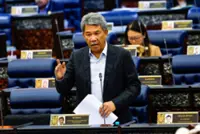Image from The Nation Thailand/ANN
BANGKOK (The Nation Thailand/ANN): The Thai aviation industry is on the cusp of a strong comeback after the pandemic, with many airlines preparing to expand their fleet and regain their former glory days.
The upbeat sentiment follows three years of challenges since the Covid-19 pandemic hit in 2020, forcing airlines to downsize their operations to survive during the global downturn.
Already a subscriber? Log in
Save 30% OFF The Star Digital Access
Cancel anytime. Ad-free. Unlimited access with perks.





